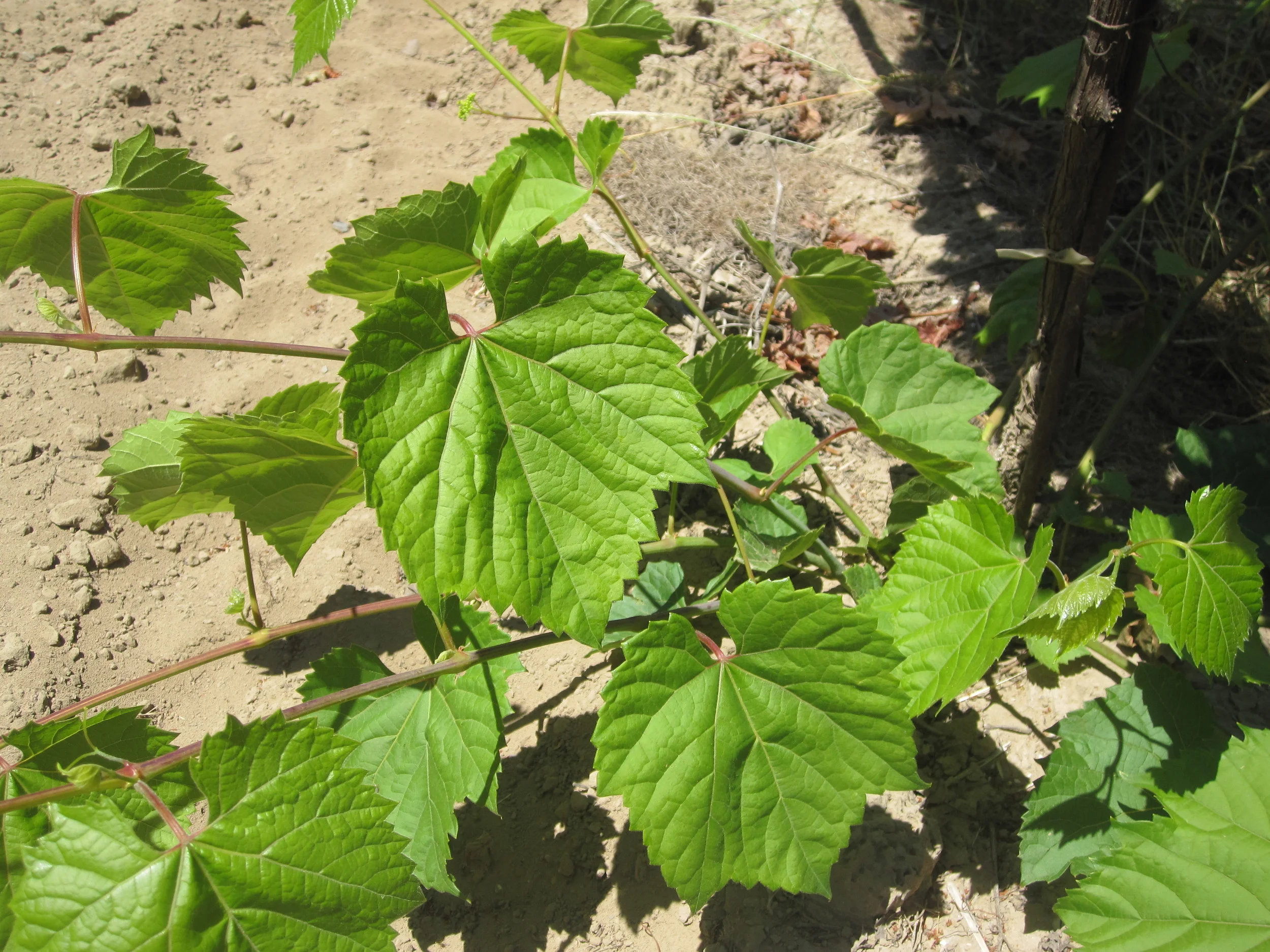You may know that both the European and California wine industries were nearly decimated by an aphid-like insect called phylloxera, which feeds on the roots of grapevines. After phylloxera outbreaks in Europe and California in the latter part of the 1800s, experimenters began to breed resistant rootstocks from mostly American wild grapevine varieties that did not show signs of susceptibility to phylloxera. Today, most modern, post-phylloxera vineyards are planted on phylloxera-resistant rootstock with the scion or budwood grafted in a commercial nursery or in the field. Our vines consist of budwood (the part that makes it Pinot Noir or Chardonnay) grafted on a rootstock.
For the west block, our vines were prepared by California Grapevine Nursery, now known as Sunridge Nurseries, using certified virus-free plant stock originally from UC Davis’ Foundation Plant Services. For the east block, we planted rootstock that we obtained from Dan Martinez at Martinez Orchards Inc., also using certified virus-free plant stock originally from UC Davis’ Foundation Plant Services.
Rootstock choices are influenced by site soil characteristics, wine grape variety, trellis design, plant density and water availability. For our site we chose three different rootstocks: 1616C, Riperia Gloire and Millardet et de Grasset 420A.
Riperia Gloire and 1616C
Riperia Gloire and 1616C are both derived from Vitis riperia, vines gathered from the banks of the Missouri and Mississippi rivers in the late 1800s and sent to France for evaluation. 1616C, a hybrid of Vitis riparia and Vitis solonis, was created by Georges Couderc and released in 1881. Couderc was a French researcher seeking a phylloxera-resistant stock to replant French vineyards. 1616C is relatively low vigor (i.e., it tends to suppress growth in the vine), drought tolerant and resistant to nematodes. Riperia Gloire was derived by Pierre Viala in the late 1800s. It is a low-vigor rootstock and moderately drought resistant. It is thought to promote early ripening of the grapes.
We planted 1616C in the higher portions of our site (blocks 1, 4, and 6), including the old kiwi orchard, because it has the highest nematode resistance. We planted the riperia in the lower portions of our site (blocks 2 and 3) because riperia likes the marginally wetter conditions we’re expecting in that area.
420A
420A is a cross between Vitis berlandieri and Vitis riperia, created by a Hungarian banker-turned-nurseryman named Teleki. According to UC Davis Professor Andy Walker, Teleki wanted a lime-tolerant rootstock for his breeding program but had to settle for seeds rather than cuttings because of a quarantine. He planted the seeds, and as they grew, it became apparent the plants were not the pure berlandieri that he expected. Instead, they were obviously hybrids of riperia and rupestris. Nevertheless, the rootstocks based on Teleki’s work, which include 5C, 5BB, SO4 and 420A, are among the most widely used rootstocks in the world. It is kind of a funny story (at least to me).
We chose 420A for block 5 because 420A is the least vigorous of the rootstocks suitable for our site.

